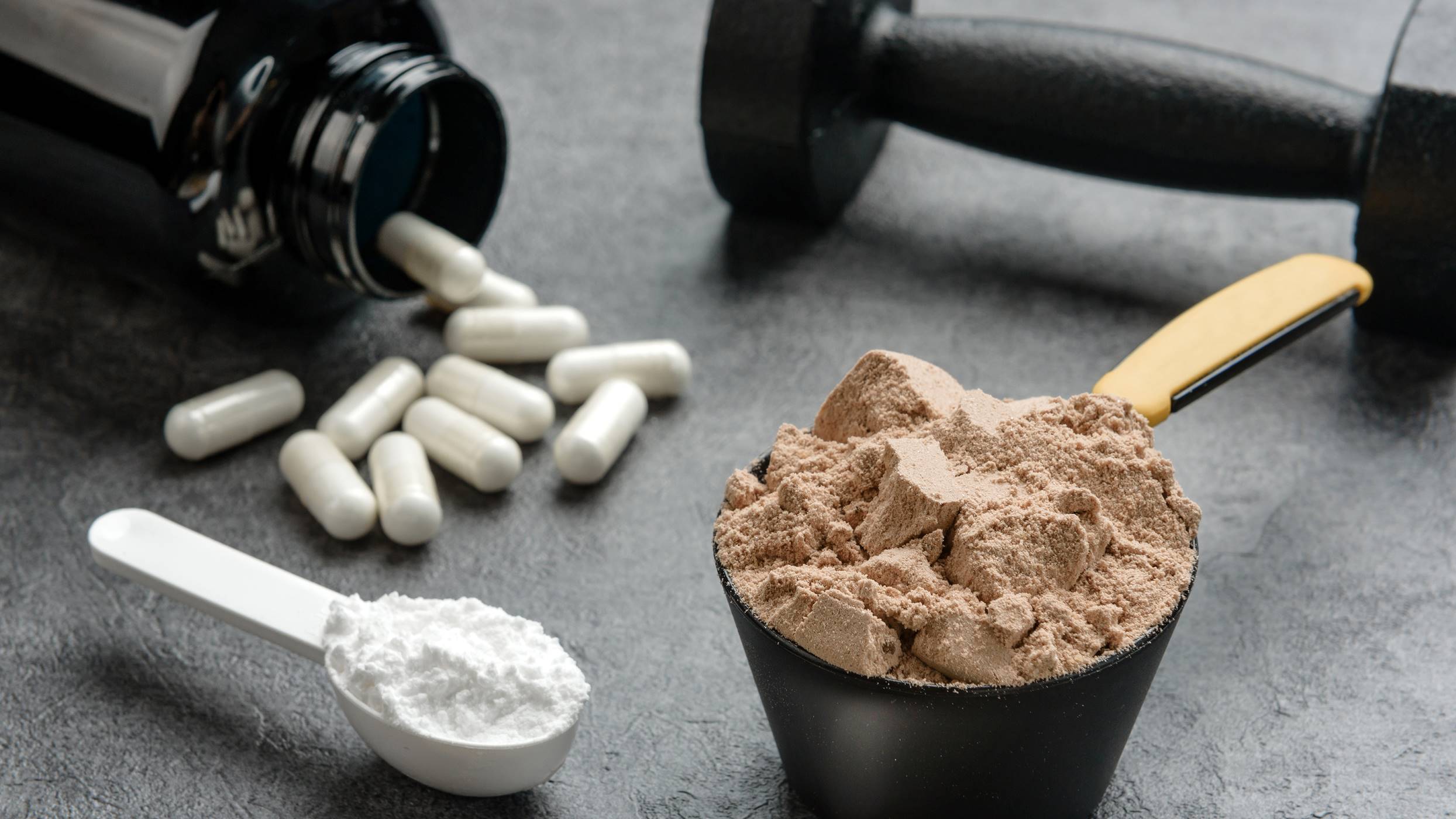

Featured
How Long Does It Take To Lose Endurance
Modified: March 1, 2024
Learn how long it takes to lose endurance and regain it. Discover expert tips and exercises to stay featured in peak physical condition.
Introduction
Endurance is a vital aspect of physical fitness that allows our bodies to perform tasks for an extended period of time. Whether it’s running a marathon, cycling long distances, or participating in endurance sports, having good endurance is crucial to achieving peak performance and reaching our fitness goals. However, it’s not uncommon for individuals to wonder how long it takes to lose endurance if they take a break from their regular training routine.
Endurance is not just about cardiovascular fitness but also encompasses muscular endurance and the body’s ability to tolerate fatigue. It is influenced by various factors, including genetics, training intensity, duration, and individual variations. Understanding these factors can help athletes and fitness enthusiasts develop effective training strategies to maintain and improve their endurance levels.
Factors Affecting Endurance:
Several factors play a significant role in endurance development and maintenance. These factors include training frequency and duration, training intensity, individual variations, training adaptations, nutrition and hydration, and sleep and recovery. By understanding how these factors impact endurance, individuals can make informed decisions about their training programs and take steps to maintain their fitness levels when needed.
Factors Affecting Endurance
Endurance is influenced by various factors that affect its development and maintenance. Understanding these factors is crucial for individuals looking to improve their endurance levels. Here are some key factors that play a role in endurance:
- Training Frequency and Duration: The frequency and duration of your training sessions have a significant impact on your endurance. Consistency is key when it comes to endurance training. Regular training sessions allow your body to adapt and improve its ability to sustain prolonged physical activity.
- Training Intensity: The intensity of your workouts also affects your endurance. Pushing yourself to higher intensity levels during training increases your cardiovascular fitness and strengthens your muscles, ultimately improving your endurance.
- Individual Variations: Each person has unique genetic and physiological characteristics that can influence their endurance levels. Some individuals may naturally have a higher endurance capacity, while others may require more training and effort to achieve the same results.
- Training Adaptations: Our bodies adapt to the demands placed upon them. Regular endurance training leads to physiological adaptations such as increased muscle efficiency, improved oxygen utilization, and enhanced cardiovascular function. These adaptations are crucial for improving endurance.
- Nutrition and Hydration: Proper nutrition and hydration are essential for optimal endurance performance. Adequate fueling with carbohydrates, proteins, and fats provides the energy needed for sustained physical activity. Staying hydrated is also crucial to prevent fatigue and maintain performance.
- Sleep and Recovery: Rest and recovery play a vital role in endurance development. During sleep, our bodies repair and rebuild tissues, allowing for better performance and improved endurance. Lack of sleep and insufficient recovery can lead to decreased endurance levels.
By considering these factors and incorporating them into your training routine, you can optimize your endurance development and maintenance. However, it’s essential to note that endurance is not built overnight. It takes time, consistency, and a well-rounded approach to see significant improvements in your endurance levels.
Training Frequency and Duration
The frequency and duration of your training sessions play a crucial role in improving your endurance. Consistency is key when it comes to endurance training. Here are some considerations regarding training frequency and duration:
Regular Training Sessions: Consistency in training is essential for developing endurance. Aim to incorporate endurance-focused workouts into your weekly routine. This might include activities such as running, cycling, swimming, or any other aerobic exercise that challenges your cardiovascular system.
Adequate Recovery Time: While it’s important to be consistent, it’s equally important to allow your body enough time to recover. Overtraining can lead to fatigue and decreased endurance. Incorporate rest days into your training schedule to allow your body to repair and rebuild stronger.
Gradual Increase: When starting a new endurance training program, it’s important to build up gradually. Begin with shorter, low-intensity workouts and gradually increase the duration and intensity over time. This progressive overload helps prevent injuries and allows your body to adapt to the increased demands.
Varied Intensity: To improve endurance, it’s important to incorporate both low-intensity and high-intensity workouts. Low-intensity workouts, such as long, slower-paced runs or rides, improve cardiovascular fitness and build a foundation for endurance. High-intensity interval training (HIIT) or tempo workouts help improve your body’s ability to maintain high levels of effort over time.
Duration of Workouts: The duration of your workouts will depend on your current fitness level and specific endurance goals. As a general guideline, aim for at least 150 minutes of moderate-intensity aerobic exercise or 75 minutes of vigorous-intensity aerobic exercise per week. Break it down into manageable sessions throughout the week, considering factors like your schedule and recovery time.
Consistency is Key: The key to improving endurance is consistency. It’s better to have a regular training schedule with shorter workout sessions than sporadic, long training sessions. Aim to spread your training throughout the week to allow for optimal recovery and adaptation.
Listen to Your Body: Pay attention to how your body responds to training. If you feel excessively fatigued, experiencing pain, or noticing a decline in performance, it may be a sign to adjust your training frequency or seek guidance from a qualified professional.
Remember that endurance development takes time and patience. Consistency with your training frequency and duration, along with proper rest and recovery, will help you achieve your endurance goals over time.
Training Intensity
Training intensity is a critical factor in developing endurance. The intensity of your workouts directly affects your cardiovascular fitness and energy systems. Here are some important considerations when it comes to training intensity:
Heart Rate Zones: Training intensity can be measured using heart rate zones. These zones are determined based on a percentage of your maximum heart rate (MHR). Different heart rate zones target specific physiological adaptations. For example, lower intensity workouts in the aerobic zone (around 60-70% of your MHR) help improve your body’s ability to utilize oxygen. Higher intensity workouts in the anaerobic zone (around 80-90% of your MHR) help improve your body’s ability to tolerate and remove lactic acid.
Variety of Intensity Levels: It’s important to incorporate a variety of intensity levels into your training routine. This helps to stimulate different energy systems and adapt your body to various demands. Long, steady-paced workouts at a moderate intensity build your aerobic endurance base, whereas shorter, more intense intervals improve your anaerobic capacity.
Progressive Overload: To improve endurance, you need to gradually increase the intensity of your workouts over time. This concept, known as progressive overload, ensures that your body continues to adapt and improve. Start with manageable intensity levels and gradually increase the duration or intensity of your workouts as your fitness improves.
Mixing Low and High Intensity: Combining low and high-intensity workouts within a training week is beneficial for overall endurance development. Low-intensity workouts, such as longer, slower-paced runs or rides, help build endurance and promote recovery. High-intensity workouts, such as interval training or hill sprints, improve your body’s ability to sustain higher levels of effort over time.
Individualized Approach: Training intensity should be tailored to each individual’s fitness level, goals, and limitations. Factors such as age, fitness level, and injury history should be considered when determining the appropriate training intensity. Consulting with a qualified coach or trainer can help you establish a training plan that suits your specific needs.
Monitoring and Adjusting Intensity: It’s important to listen to your body and monitor your perceived exertion during workouts. Rating your perceived exertion on a scale of 1 to 10 can help you gauge the intensity level. Adjust the intensity based on your goals, fitness level, and fatigue levels. Remember, consistency and gradual progression are key to improving endurance.
Training intensity is a crucial aspect of endurance development. By strategically incorporating different intensity levels into your training routine and progressively challenging yourself, you can enhance your cardiovascular fitness, improve endurance, and achieve your desired performance goals.
Individual Variations
When it comes to endurance training, individual variations play a significant role in how quickly one can develop and improve their endurance. Each person has unique genetic and physiological characteristics that can influence their endurance levels. Understanding these variations can help individuals tailor their training programs and maximize their endurance potential. Here are some key points to consider regarding individual variations:
Genetic Factors: Genetics can influence endurance performance. Some individuals may have a higher proportion of slow-twitch muscle fibers, which are more resistant to fatigue and better suited for endurance activities. Others may have a higher percentage of fast-twitch muscle fibers, which are better suited for short bursts of intense activity. While genetics may provide a starting point, it’s important to remember that training and lifestyle factors can still lead to significant improvements in endurance regardless of genetic predispositions.
Physiological Factors: Factors such as lung capacity, oxygen uptake, and heart rate response can vary among individuals and impact endurance performance. Some people naturally have a higher aerobic capacity, allowing them to sustain intense exercise for longer durations. However, with proper training and conditioning, individuals can still improve their physiological factors and enhance their endurance capacity.
Training Response: Each individual responds differently to training stimuli. Some individuals may see rapid improvements in endurance with minimal training, while others may require more time and effort to achieve similar results. It’s important to be patient and not compare your progress to others. Focus on your own journey and celebrate your individual achievements.
Lifestyle Factors: Lifestyle factors, such as diet, sleep, stress levels, and overall health, can also influence endurance development. Proper nutrition and hydration support optimal energy levels and recovery, while sufficient sleep ensures adequate rest and regeneration. Managing stress levels and maintaining good overall health can contribute to better endurance performance as well.
Mental Determination: Endurance training requires mental resilience and determination. Some individuals may naturally possess a strong mental attitude, enabling them to push through fatigue and challenges. Others may need to work on developing mental strategies to overcome mental barriers and maintain focus during endurance activities. Building mental endurance is just as important as physical endurance.
Personalized Approach: Recognizing and understanding your individual variations is crucial for designing a training plan that aligns with your strengths and weaknesses. Working with a qualified coach or trainer can help you identify your specific needs and develop a personalized training program that addresses your individual variations and goals.
It’s important to remember that while individuals may differ in their starting points and rate of progress, everyone has the potential to improve their endurance with consistent training and dedication. By acknowledging and working with your individual variations, you can optimize your training approach and unlock your full endurance potential.
Training Adaptations
Endurance training elicits a variety of adaptations in the body that contribute to improved endurance performance. Understanding these adaptations can help individuals develop effective training strategies and optimize their endurance training programs. Here are some key training adaptations related to endurance:
Improved Cardiovascular Function: Endurance training enhances cardiovascular function by strengthening the heart muscle and improving its ability to pump blood efficiently. It increases the number of red blood cells, improves blood flow to working muscles, and enhances oxygen-carrying capacity, thus optimizing the delivery of oxygen to the muscles during exercise.
Increased Capillary Density: Endurance training leads to the development of a denser network of capillaries, which are tiny blood vessels that supply oxygen and nutrients to the muscles. The increased capillary density improves the oxygen and nutrient exchange between the blood and the muscles, enhancing endurance capacity.
Enhanced Energy System Efficiency: Endurance training improves the body’s ability to utilize different energy systems efficiently. It encourages the development of aerobic energy pathways, allowing the body to rely more on fat oxidation for fuel, preserving valuable glycogen stores, and delaying the onset of fatigue during prolonged exercise.
Increased Mitochondrial Density and Function: Mitochondria, often referred to as the “powerhouses” of cells, play a crucial role in producing energy. Endurance training stimulates the growth and increased density of mitochondria within muscle cells, enhancing their ability to generate ATP, the energy currency of the body. This adaptation improves endurance capacity and delays the onset of fatigue.
Improved Muscular Endurance: Endurance training helps improve the muscles’ ability to sustain prolonged physical activity. It enhances muscular endurance by increasing the number and size of the mitochondria within muscle fibers, improving their oxidative capacity. Additionally, training adaptations improve the utilization of muscle glycogen and enhance the muscles’ ability to clear metabolic byproducts, such as lactic acid, delaying the onset of fatigue.
Increased Mental Resilience: Endurance training not only challenges the body but also builds mental resilience. Long-duration endurance activities require mental strength, concentration, and the ability to push through discomfort. Regular endurance training helps individuals develop mental toughness, enabling them to overcome hardships and maintain focus during prolonged physical exertion.
Optimized Body Composition: Endurance training promotes favorable changes in body composition. It helps reduce body fat levels and increase lean muscle mass, leading to a more efficient body composition for endurance activities. A leaner body carries less weight, reducing the energy demands and enabling individuals to sustain endurance efforts for longer durations.
Flexibility and Joint Health: Regular endurance training often involves repetitive motions, which can improve flexibility and joint health. Dynamic movements performed during endurance activities help promote joint mobility and increase the range of motion. This can enhance overall athletic performance and reduce the risk of injuries.
Individualized Adaptations: It’s important to recognize that training adaptations can vary among individuals due to genetic and physiological factors. Each person may respond differently to endurance training stimuli. Understanding your unique response to training can help you tailor your training program and optimize your endurance development.
By understanding the training adaptations that occur in response to endurance training, individuals can design effective training programs, monitor progress, and make adjustments as necessary. Emphasizing a well-rounded training approach that targets cardiovascular fitness, muscular endurance, and mental resilience can lead to significant improvements in endurance performance over time.
Types of Endurance Training
Endurance training encompasses a variety of activities that challenge different energy systems and provide a well-rounded approach to improving endurance. By incorporating a mix of training modalities, individuals can enhance their cardiovascular fitness, muscular endurance, and overall endurance performance. Here are some common types of endurance training:
Long, Slow Distance (LSD) Training: LSD training involves performing sustained, low-intensity exercise for an extended period. It is typically performed at a comfortable pace below the anaerobic threshold. LSD training improves aerobic capacity, enhances fat utilization, and builds a strong endurance base.
Interval Training: Interval training involves alternating between periods of high-intensity exercise and active recovery or lower-intensity exercise. This type of training challenges both aerobic and anaerobic energy systems, improves cardiovascular fitness, and enhances the body’s ability to sustain high-intensity efforts for longer durations. Examples of interval training include HIIT (High-Intensity Interval Training) and Fartlek training.
Tempo Training: Tempo training involves sustaining a continuous effort at a moderately high intensity, typically around the lactate threshold. This type of training improves the body’s ability to sustain a challenging pace and enhances metabolic efficiency. Tempo workouts are typically performed at a pace just below the threshold where there is a buildup of lactic acid in the muscles.
Hill Training: Hill training involves running or cycling uphill repeatedly. It challenges the muscles, cardiovascular system, and mental toughness. Hill repeats build strength, power, and endurance, helping individuals become more efficient at maintaining speed and effort on inclines.
Cross-Training: Cross-training involves incorporating a variety of activities into your training routine. This can include activities such as swimming, cycling, elliptical training, rowing, or any other aerobic exercise that complements and challenges different muscle groups. Cross-training helps reduce the risk of overuse injuries, promotes overall fitness, and enhances endurance capacity.
Endurance Circuit Training: Endurance circuit training combines cardiovascular exercises with strength or resistance training exercises. It involves performing a series of exercises with minimal rest in between, targeting different muscle groups while maintaining an elevated heart rate. Endurance circuit training improves muscular endurance, cardiovascular fitness, and overall functional strength.
Sport-Specific Training: Endurance training can also be specific to the sport or activity you participate in. For example, swimmers can perform long-distance swimming, runners can focus on interval and LSD running workouts, and cyclists can engage in long rides or hill repeats. Sport-specific training helps individuals develop the necessary endurance capacity for their chosen activity.
Periodization: Periodization is an approach that involves dividing the training year into specific phases, each with a different focus. It incorporates different types of endurance training throughout the year to maximize adaptation and prevent plateauing. The phases may include an endurance-building phase, a strength-building phase, and a race-specific phase, tailored to an individual’s goals and the specific demands of their sport.
By incorporating these different types of endurance training into your routine, you can develop a well-rounded approach to improving your endurance capacity. Consider your goals, preferences, and individual needs when selecting the types of training that best suit you. Varying your training modalities can keep you engaged, challenge your body in different ways, and lead to continued progress in your endurance performance.
Nutrition and Hydration
Nutrition and hydration play a crucial role in optimizing endurance performance. Proper fueling and hydration support energy production, enhance recovery, and help the body sustain prolonged physical activity. Here are some key considerations for nutrition and hydration in endurance training:
Caloric Balance: Endurance training increases energy expenditure, and it’s important to ensure you are consuming enough calories to meet your energy needs. Consult with a registered dietitian or sports nutritionist to calculate your individual calorie requirements based on factors such as age, gender, body composition, activity level, and goals.
Carbohydrates: Carbohydrates are the primary fuel source for endurance exercise. Consuming adequate amounts of carbohydrates before, during, and after workouts helps maintain glycogen stores and sustains energy levels. Focus on incorporating complex carbohydrates such as whole grains, fruits, and vegetables into your diet.
Protein: Protein is essential for muscle repair, recovery, and building lean muscle mass. Endurance athletes may have increased protein needs to support these processes. Aim for a balanced intake of high-quality protein sources such as lean meat, poultry, fish, eggs, dairy, legumes, and plant-based proteins.
Fats: While carbohydrates are the primary fuel during endurance exercise, fats also play a role in meeting energy demands, especially during longer duration activities. Choose healthy sources of unsaturated fats such as avocados, nuts, seeds, and olive oil.
Hydration: Maintaining proper hydration is critical for optimal endurance performance. Dehydration can lead to decreased endurance capacity, fatigue, and impaired cognitive function. Drink fluids regularly throughout the day, and during exercise, aim to consume fluids that contain electrolytes to replace those lost through sweat.
Electrolytes: Electrolytes such as sodium, potassium, magnesium, and calcium are essential for proper muscle function, nerve conduction, and fluid balance. Consuming electrolyte-rich foods and beverages, or using electrolyte supplements, can help replenish electrolyte stores and prevent imbalances during endurance activities.
Timing of Nutrition: Proper timing of nutrition is important to optimize endurance performance. Consume a balanced meal or snack containing carbohydrates and protein about 2-3 hours before exercise to provide energy and support muscle function. During longer workouts, consider consuming easily digestible carbohydrates, such as sports drinks or energy gels, to sustain energy levels. After exercise, prioritize post-workout nutrition to replenish glycogen stores and facilitate muscle recovery, focusing on a combination of carbohydrates and protein.
Individualized Approach: Nutritional needs can vary based on individual factors, including metabolism, body composition, training volume, and genetics. Experiment with different foods, timing, and ratios of macronutrients to determine what works best for your body. Consult with a sports nutritionist or registered dietitian who specializes in endurance sports to develop a personalized nutrition plan.
Remember, nutrition and hydration strategies should be practiced consistently, not only during training but also on race days or important events. Through proper fueling and hydration, you can optimize your endurance performance, sustain energy levels, enhance recovery, and maximize your endurance potential.
Sleep and Recovery
Sleep and recovery are essential components of endurance training. Adequate rest and recovery allow for physiological adaptations, muscle repair, and optimal performance. Here are some key points to consider regarding sleep and recovery in relation to endurance:
Sleep Quality and Quantity: Getting enough high-quality sleep is crucial for endurance athletes. During sleep, the body releases growth hormone, which aids in muscle repair and recovery. Aim for 7-9 hours of uninterrupted sleep each night to support your body’s recovery processes.
Rest Days: Incorporate rest days into your training schedule to allow your body sufficient time to recover and adapt. Rest days can include complete rest or low-intensity activities such as gentle stretching, yoga, or light walking. Listen to your body and adjust your training schedule to include regular rest days.
Active Recovery: Active recovery involves engaging in low-intensity activities to promote blood flow, reduce muscle soreness, and aid in recovery. Examples include gentle cycling, swimming, or light jogging. Active recovery helps flush out metabolic byproducts, deliver nutrients to the muscles, and promote healing.
Hydration and Nutrition: Proper hydration and nutrition are essential for recovery. Replenish fluids and electrolytes lost during exercise and consume a balanced meal or snack containing carbohydrates and protein within the first hour after exercise to kickstart the recovery process. A diet rich in whole, nutrient-dense foods supports optimal recovery and adaptation.
Soft Tissue Techniques: Incorporating soft tissue techniques can aid in recovery. Foam rolling, self-myofascial release, and massage can help release muscle tension, improve circulation, and alleviate muscle soreness. These techniques enhance recovery and promote mobility.
Stress Management: Managing stress is crucial for both physical and mental recovery. High levels of stress can impair recovery and increase the risk of overtraining. Incorporate stress management techniques such as relaxation exercises, meditation, or pursuing hobbies to help reduce stress levels and promote overall well-being.
Listen to Your Body: Pay attention to your body and adjust your training or recovery strategies accordingly. If you experience excessive fatigue, persistent muscle soreness, or a decline in performance, it may be a sign that you need more rest or recovery time. Prioritize self-care and adjust your training plan as needed.
Mental Recovery: Endurance training can be mentally challenging. Allow yourself time for mental recovery, including relaxation, reflection, and engaging in activities that bring you joy and relaxation. Taking breaks from intense training and focusing on other aspects of life can help prevent mental burnout and enhance overall well-being.
Individualized Approach: Each individual may have different recovery needs and responses. Experiment with different recovery strategies and listen to your body to find what works best for you. Working with a coach or sports professional can help you develop a personalized recovery plan based on your specific needs and goals.
Prioritizing sleep and recovery allows your body to adapt, repair, and ultimately improve endurance performance. Incorporate proper rest, recovery techniques, and stress management strategies into your routine to support your body and mind throughout your endurance training journey.
Common Mistakes in Endurance Training
Endurance training requires a strategic and well-rounded approach to optimize performance and prevent setbacks. Avoiding common mistakes can help individuals progress more effectively and minimize the risk of injuries. Here are some common mistakes to be aware of when it comes to endurance training:
Overtraining: One of the most common mistakes in endurance training is overtraining. Pushing your body beyond its limits without allowing sufficient rest and recovery can lead to detrimental effects on overall performance, increased risk of injuries, and stalled progress. It’s important to incorporate rest days and listen to your body’s signals to avoid overtraining.
Insufficient Recovery: Inadequate recovery can hinder progress and increase the risk of injuries. Recovery factors such as sleep, nutrition, hydration, and stress management should be prioritized alongside training. Give your body the time and resources it needs to repair, adapt, and grow stronger.
Improper Training Intensity: Failing to train at the appropriate intensity level can impact endurance gains. Training too intensely without proper base-building can lead to burnout or injuries. On the other hand, training at low intensity exclusively may not provide enough stimulus for physiological adaptations. Balancing the intensity of your workouts is crucial for optimal progress.
Skipping Strength Training: Strength training is often overlooked in endurance training but is crucial for injury prevention and optimizing performance. Neglecting strength training can lead to muscular imbalances, poor running or cycling mechanics, and reduced overall functional strength. Incorporate strength training exercises specific to your sport to ensure a well-rounded training program.
Poor Nutrition and Hydration: Neglecting proper nutrition and hydration can greatly impact endurance performance. Inadequate fueling before, during, and after workouts can lead to low energy levels, reduced stamina, and impaired recovery. Maintain a balanced diet, fuel appropriately for workouts, and prioritize hydration to support your training and endurance goals.
Inadequate Planning and Progression: Lack of proper planning and progression can hinder progress and result in stagnation. Having a well-structured training plan with periodization, gradual progression, and specific goals helps ensure that workouts are purposeful and aligned with your objectives. Avoid randomly selecting workouts without a clear plan and progression in mind.
Ignoring Mobility and Flexibility: Neglecting mobility and flexibility exercises can lead to reduced range of motion, increased risk of injuries, and decreased overall performance. Incorporate stretching, foam rolling, and mobility exercises into your training routine to maintain joint health and improve movement quality.
Neglecting Mental Endurance: Endurance training not only requires physical stamina but also mental endurance. Neglecting mental toughness and mental strategies can limit your performance potential. Develop mental resilience through techniques such as visualization, positive self-talk, and goal-setting to excel in endurance activities.
Failure to Seek Professional Guidance: Attempting to navigate endurance training without seeking professional guidance can be challenging. Working with a qualified coach, trainer, or sports professional can provide valuable insights, personalized programming, and help you avoid common mistakes. They can help tailor your training plan to your specific needs, monitor progress, and make necessary adjustments along the way.
Avoiding these common mistakes in endurance training can help you progress effectively, minimize the risk of injuries, and maximize your performance potential. By adopting a balanced and well-planned approach to training, you can optimize your endurance gains and enjoy long-term success in your chosen endurance activities.
How Long Does It Take to Lose Endurance?
Endurance is not something that is gained overnight, but it’s a fundamental aspect of physical fitness that can be lost if not maintained. The rate at which endurance declines varies depending on several factors, including the individual’s training background, the duration of the break from training, and the level of fitness attained. While it’s not possible to provide an exact timeframe, here are some general guidelines:
Training Background: Individuals who have a solid foundation of endurance due to consistent and long-term training will generally experience a slower decline in their endurance capacity compared to those who have a less extensive training history. The adaptations that have been developed through years of training are likely to linger for a longer period.
Duration of Break: The length of time taken off from training plays a significant role in the rate of decline in endurance. In general, the longer the break, the greater the impact on endurance capacity. Taking a few days or a week off may not have a significant impact, but an extended break of several weeks or months can result in noticeable declines in endurance.
Level of Fitness Attained: The level of fitness that an individual has achieved prior to taking a break also influences the rate of decline. Those with a higher level of fitness, such as well-trained athletes, tend to experience a slower decline in endurance compared to individuals who are at a lower fitness level.
Type of Endurance: Different types of endurance may decline at different rates. For example, cardiovascular endurance may take longer to decline than muscular endurance. This is because cardiovascular adaptations, such as increased stroke volume or improved capillary density, tend to linger for a longer time compared to specific muscular adaptations.
Age and Genetics: Age and genetics can also influence the rate at which endurance declines. As individuals age, physiological changes occur that may impact endurance capacity. Additionally, genetic factors can play a role in how quickly an individual loses endurance. Some individuals may have a naturally higher capacity for endurance, allowing them to retain it for longer periods even with reduced training.
While there is no one-size-fits-all answer to how long it takes to lose endurance, it’s important to note that the principle of “use it or lose it” applies. Consistently engaging in regular endurance training is crucial for maintaining and improving endurance capacity. The longer the break from training, the more noticeable the decline in endurance will be. However, with proper training and gradual progression, endurance levels can be regained and improved over time.
Remember, the body is resilient and adaptable. If you do experience a decline in endurance, don’t be discouraged. With consistent training and patience, endurance capacity can be rebuilt, and previous levels of performance can be regained.
Strategies to Maintain Endurance
Maintaining endurance requires consistent effort and smart training strategies. Whether you’re taking a break from intense training or looking to sustain your current level of endurance, here are some effective strategies to help you maintain your endurance capacity:
Active Recovery: Incorporate active recovery into your training routine. Engaging in low-intensity activities such as walking, swimming, or cycling can help maintain blood flow, prevent muscle stiffness, and promote overall fitness without overtaxing your body.
Monitor Training Intensity: Keep an eye on your training intensity. Avoid pushing yourself too hard or exceeding your current fitness level during workouts. Opt for moderate-intensity sessions that allow you to maintain your current endurance capacity without pushing the boundaries excessively.
Interval Training: Incorporate interval training sessions into your routine. These shorter, high-intensity bursts followed by periods of recovery can help maintain and improve your cardiovascular fitness without requiring long and demanding workouts. Interval training also helps break the monotony of steady-state endurance training.
Maintain a Balanced Training Program: Balance your training program by including a mix of aerobic exercises, strength training, and flexibility exercises. This ensures that you work on different aspects of your fitness and prevent imbalances that can lead to injuries. Strength training, in particular, helps maintain muscle mass and overall strength, which supports endurance performance.
Cross-Training: Incorporate cross-training activities into your routine. Engaging in other endurance-related sports or activities, such as swimming, cycling, or hiking, can help maintain your cardiovascular fitness while providing a new and enjoyable challenge.
Mind Your Nutrition: Good nutrition is essential for maintaining endurance. Ensure you have a balanced diet that provides adequate energy and nutrients to support your training. Focus on consuming carbohydrates for fuel, protein for muscle repair, and healthy fats for overall energy and health.
Prioritize Recovery: Dedicate time to rest and recovery. Aim for quality sleep, manage stress levels, and incorporate recovery techniques such as stretching, foam rolling, and massage to support your body’s repair and adaptation processes.
Monitor Progress: Regularly assess your endurance performance to track your progress and identify any declines. This can be done through periodic fitness tests or maintaining a training log. By staying aware of your current fitness level, you can make adjustments to your training routine as needed.
Stay Motivated: Find ways to stay motivated and enjoy your training. Set realistic goals, vary your workouts, find training partners, and celebrate your achievements to maintain enthusiasm and dedication to your endurance program.
Listen to Your Body: Pay attention to your body’s signals and adjust your training accordingly. If you’re feeling fatigued or experiencing any pain or discomfort, it’s important to take a step back and allow for proper rest and recovery. Pushing through excessive fatigue or training through injuries may do more harm than good.
By following these strategies, you can maintain your current level of endurance and prevent significant declines in performance. Consistency, balanced training, proper nutrition, and self-care are key to keeping your endurance capacity intact and setting a solid foundation for future improvements.
Conclusion
Endurance is a critical component of physical fitness that allows individuals to sustain prolonged physical activity and excel in sports or activities that require stamina. While it takes time and effort to build and improve endurance, it’s essential to maintain and preserve this capacity even during periods of rest or reduced training. By understanding the factors that impact endurance, avoiding common mistakes, and implementing effective strategies, individuals can ensure that their endurance remains intact and ready to be further developed.
Factors such as training frequency and duration, training intensity, individual variations, training adaptations, nutrition and hydration, sleep and recovery, and the types of endurance training all come into play when aiming to maintain endurance. Being consistent, incorporating proper rest and recovery, and listening to your body’s needs are key components of maintaining endurance levels. Additionally, paying attention to nutrition, hydration, and overall well-being supports optimal endurance performance and helps prevent setbacks or declines.
Remember that maintaining endurance is an ongoing process that requires a balanced and individualized approach. It’s not enough to achieve endurance and then neglect its maintenance. By implementing smart training strategies, seeking professional guidance when needed, and staying motivated, individuals can keep their endurance intact and set the stage for future improvements in their fitness levels and performance.
So, whether you’re a seasoned athlete or a fitness enthusiast, take the necessary steps to maintain your endurance. Stay committed, prioritize rest and recovery, fuel your body properly, and listen to what it needs. With these strategies, you can ensure that your endurance capacity remains strong, allowing you to continue enjoying the benefits of endurance training and reaching your fitness goals.









